Derby Porcelain: William Duesbury II and Robert Bloor
Image: Old China Works, Derby, showing kilns for firing the porcelain. John Keys, Sketches of Old Derby and Neighbourhood (London and Derby, 1895).
Image from: Local Studies and History, Birmingham Central Library
Following the death of William Duesbury, his son William Duesbury II (1763-1797) took control of Crown Derby. His period is now recognised as the Golden Age of the Derby factory. William Duesbury II possessed both managerial skills and artistic appreciation, and he built up a formidable team of artists, modellers and gilders. It included Zachariah Boreman and John Brewer, who were masters of landscape; William Pegg and William Billingsley, two outstanding flower painters; George Robertson, who is noted for his fine marine scenes; and the modellers Pierre Stephan and William Coffee. Significant improvements were made in the porcelain body, its glaze and decoration. When William Duesbury II died at the early age of 34, the factory was ranked as amongst the finest in Europe.
A short period of decline followed, and many artists had to leave Derby. But in 1811 Robert Bloor, a former clerk to the Duesburys, took control of the factory. Under him Derby welcomed the return of some of the talented and creative artists. Early traditions were recaptured and enriched. Bone china was developed, and elaborate new shapes were introduced. Lustrous and ornate adaptations of Oriental patterns were added to the traditional Derby style. Many aristocratic clients were attracted, including the Earl of Shrewsbury, Earl Ferrers, and later Queen Victoria herself.
Soon after Bloor’s death in 1846, the factory was closed, but a small group of artists and potters jointly established a new factory in King Street, Derby. They managed to preserve the firm’s artistic traditions, and handed on the skills and experience of early Derby artists and craftsmen to modern times.
The Royal Crown Derby Porcelain Company in Osmaston Road is now in the third century of its history. A rich and varied heritage of artistry and craftsmanship which originated with William Duesbury still lives on in the remarkable range of Derby products, with their elaborate shapes, flamboyant colours and intricate gilding.
« Previous in this sectionNext in this section »Continue browsing this section
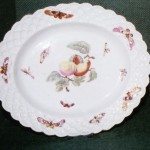 Derby Porcelain in the 18th and early 19th centuries
Derby Porcelain in the 18th and early 19th centuries
 Derby Porcelain: André Planche and William Duesbury
Derby Porcelain: André Planche and William Duesbury
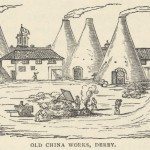 Derby Porcelain: William Duesbury II and Robert Bloor
Derby Porcelain: William Duesbury II and Robert Bloor
 Pastoral Group, c.1770
Pastoral Group, c.1770
 Candelabrum, c. 1755-60
Candelabrum, c. 1755-60
 The Four Quarters (Continents), c.1775
The Four Quarters (Continents), c.1775
 Tithe Pig Group, c.1765-70
Tithe Pig Group, c.1765-70
 The “Welsh” Tailor, c.1770
The “Welsh” Tailor, c.1770
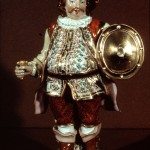 James Quin as Falstaff, c. 1825
James Quin as Falstaff, c. 1825
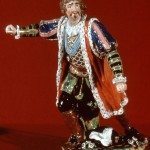 Edmund Kean as Richard III, c.1815
Edmund Kean as Richard III, c.1815
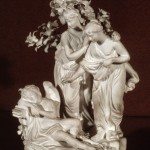 Virgins Awakening Cupid, c.1780
Virgins Awakening Cupid, c.1780
 Frill Vase and Cover, c.1760
Frill Vase and Cover, c.1760
 Blue & White Table Centre in two parts, c.1760
Blue & White Table Centre in two parts, c.1760
 Ice Pail, c.1796-1800
Ice Pail, c.1796-1800
 Pot-Pourri, c.1800-1810
Pot-Pourri, c.1800-1810
 William Pegg’s Thistle Dish, c.1800
William Pegg’s Thistle Dish, c.1800
 Dish, c.1800
Dish, c.1800
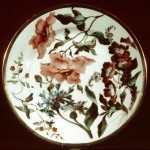 Dessert Plate, c.1813-1820
Dessert Plate, c.1813-1820
 William Billingsley’s Prentice Plate, 1790-1795
William Billingsley’s Prentice Plate, 1790-1795
 Dessert Dish, c.1790
Dessert Dish, c.1790
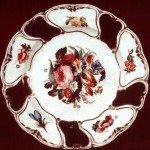 A Dessert Plate from the Trotter Service, c.1825
A Dessert Plate from the Trotter Service, c.1825
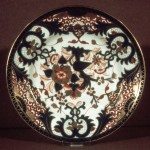 Dessert Plate (Imari)
Dessert Plate (Imari)
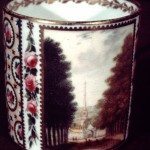 Coffee Can, c.1793-4
Coffee Can, c.1793-4
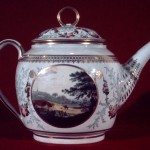 Teapot, c.1795
Teapot, c.1795
 Teapot, c.1795
Teapot, c.1795
 Chocolate Mug with Cover, c.1800
Chocolate Mug with Cover, c.1800






